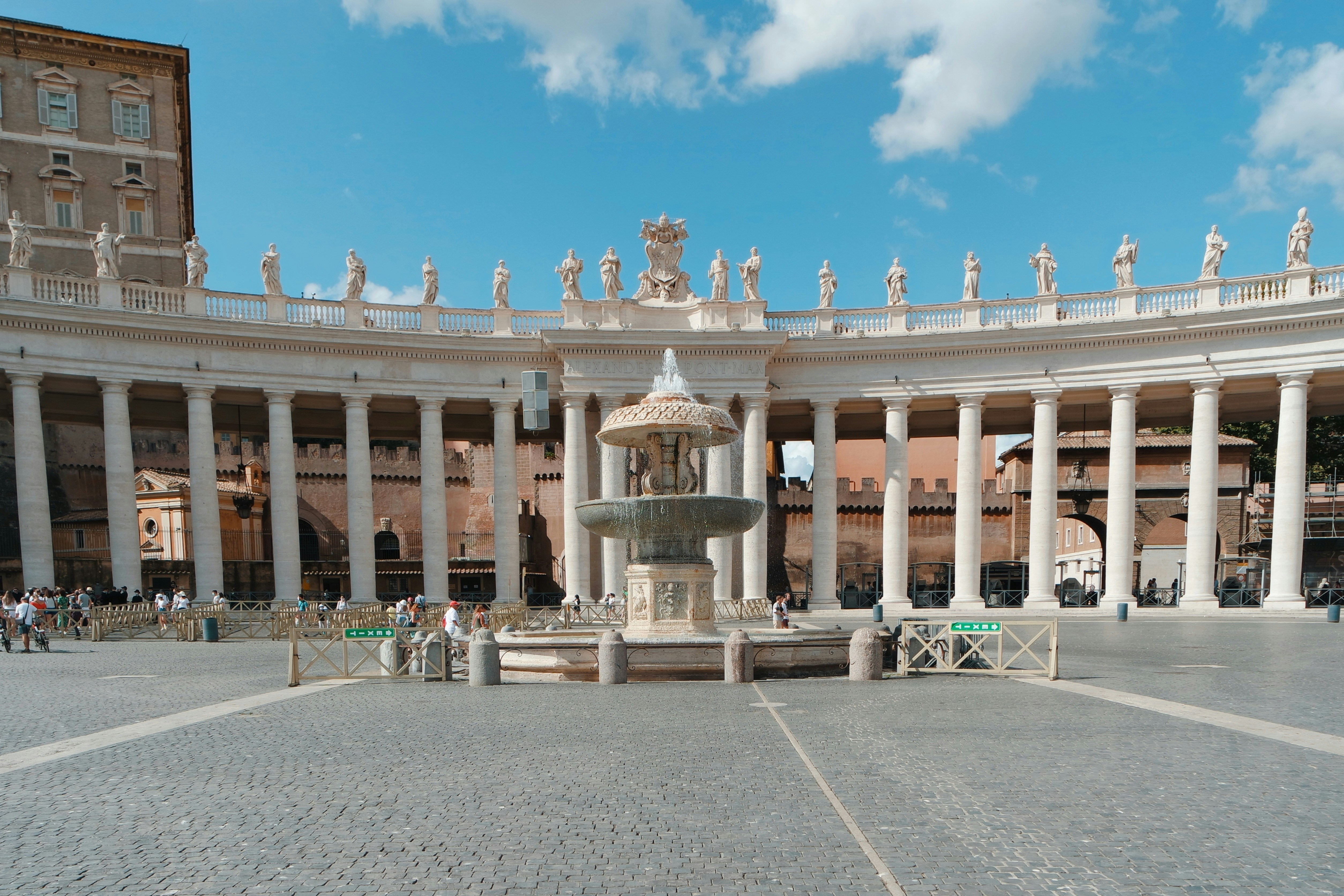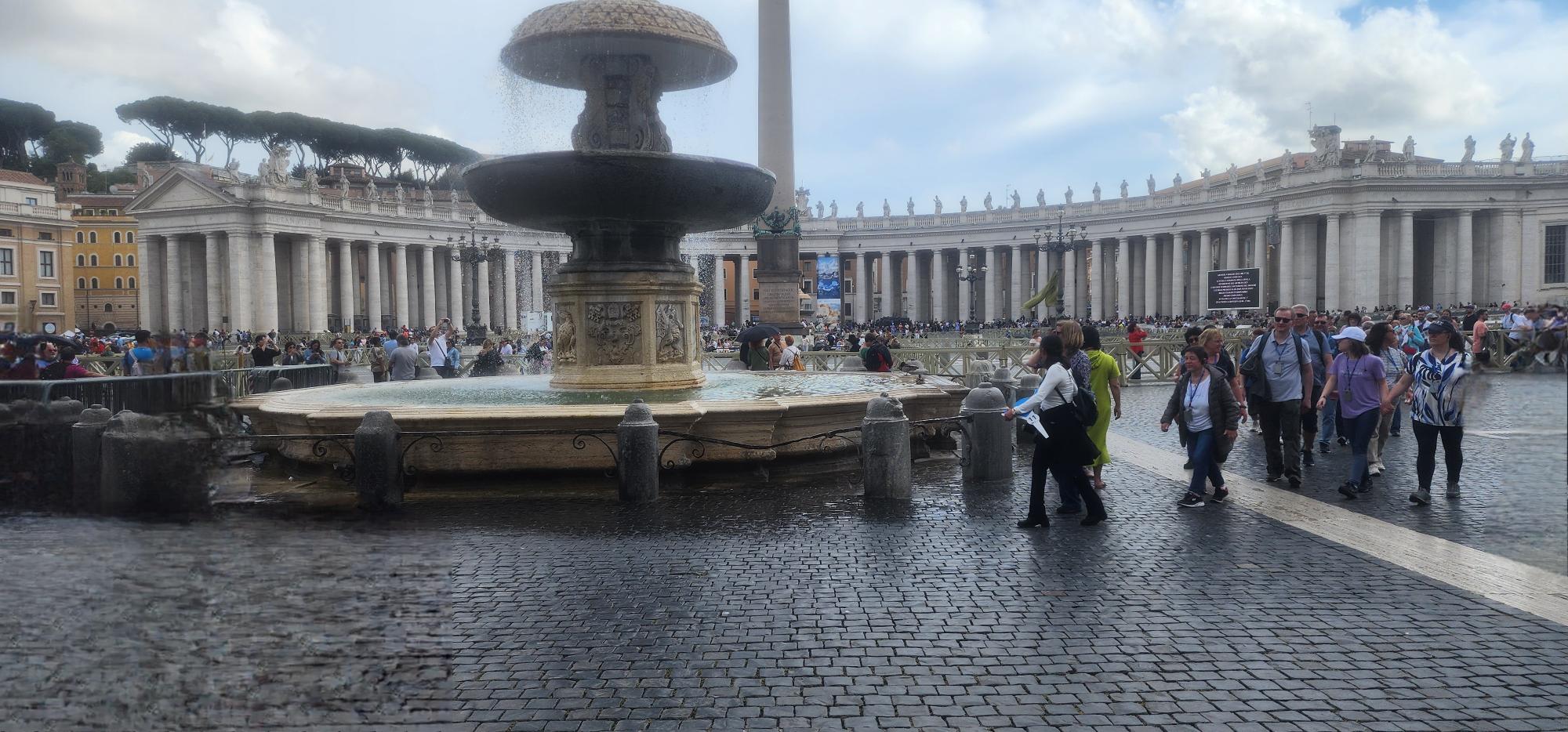About St. Peter's Square
Built over the traditional burial site of Apostle Peter, St. Peter’s Basilica is a Renaissance masterpiece by artists like Michelangelo, Raphael, and Bernini, filled with Christian art that reflects the glory of God rather than human achievement.
A Place of Unity and Witness
Bernini’s redesign of St. Peter’s Square from 1656 to 1667 features sweeping Doric colonnades arranged in an oval and trapezoid layout. These massive columns symbolically embrace visitors like “the maternal arms of Mother Church,” uniting architectural grandeur with spiritual meaning to welcome believers worldwide.
An Ancient Obelisk, A Lasting Symbol
At the heart of St. Peter’s Square stands a 3,300-year-old Egyptian obelisk of red granite, supposedly came from Heliopolis. Once located in Nero’s Circus—where early Christians were martyred—it was moved to Rome in 1586. Today, it now rises 41m high and serves as the square’s symbolic and visual centrepiece.
The Paving and Sundial
St. Peter’s Square is a giant sundial using the tall Egyptian obelisk as the shadow-caster. A grey granite line with marble discs marks noon and the sun’s position during the year, including solstices and zodiac signs. These features let visitors tell the time and track the sun’s path across the year.
- An aerial view of St. Peter’s Square reveals a keyhole shape, symbolizing the keys to Heaven and the Church given to Peter by Christ.
- The two fountains in St. Peter’s Square, by Maderno and Bernini, create symmetry and use water from Rome’s ancient Aqua Virgo aqueduct.
- The 140 statues in St. Peter’s Square, added in the 17th century, represent 102 male and 38 female saints and martyrs, each about 3m tall.






